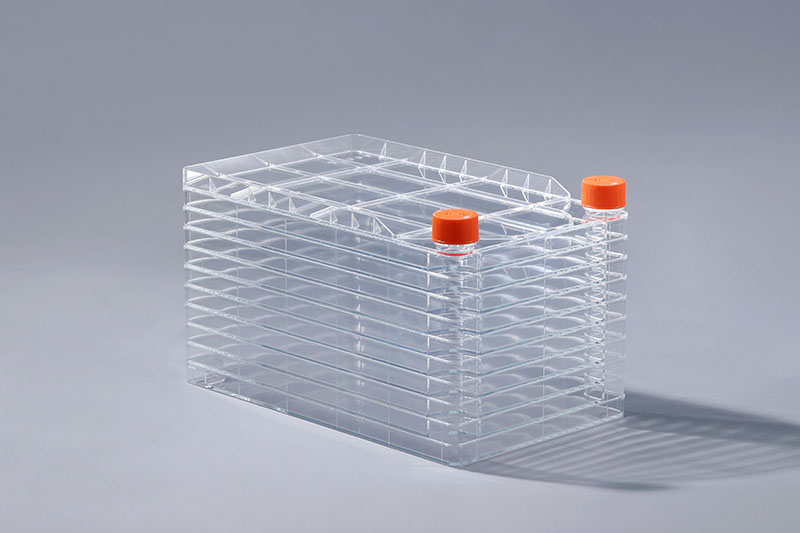Le cur i bhfeidhm leathan cultúr cille i réimse na n-eolaíochtaí beatha, úsáidtear Athraíonn an brú osmotic idéalach de réir cineáil agus cine na gceall. Is é 290 mmol/L brú osmotic plasma daonna, a mheastar a bheith mar an brú osmotic idéalach chun cealla daonna a shaothrú in vitro. Is gnách go mbíonn brú osmotic na gcealla mamach idir 290 agus 300 mmol/L. Tá fibroblasts scamhóg suthach daonna 250-325 mmol/L, agus lucha thart ar 310 mmol/L. In iarratais phraiticiúla, tá an brú osmotic de 260-320 mmol/L oiriúnach don chuid is mó de na cealla. Ina theannta sin, is iad teocht chuí, timpeallacht gháis agus luach pH, neamh-tocsaineacht agus steiriúlacht na coinníollacha bunúsacha maidir le cultúr cille. go forleathan mar chultúr cille inchaite i réimsí táirgeadh agus ullmhúcháin vacsaíní, antasubstaintí monachlónacha, gaschealla agus teiripe cille sómach. Tá ceanglais dhian ar an gcomhshaol ag fás cille, agus tá brú osmotic oiriúnach mar bhunús le cealla chun stát fáis maith a choinneáil. Dá bhrí sin, tá brú osmotic cuí ar cheann de na coinníollacha tábhachtacha chun cealla a shaothrú i monarchana cille. Baineann cothabháil brú osmotic de chealla fíocháin mamaigh agus ainmhithe eile in vitro go príomha le clóiríd sóidiam, ach ní féidir neamhaird a dhéanamh ar an gcaidreamh idir brú osmotic de thréleictreach eile. Tá an brú osmotic comhréireach le líon na móilíní agus na n-ian den tuaslagáit i méid aonad an tuaslagóra, agus déantar an t-iarmhéid ian sa mheán cultúir a rialú de réir cion áirithe. Ní hamháin go gcoimeádtar gnáth-bhrú osmotic teannas cille, ach tá ról tábhachtach aige freisin maidir le meitibileacht cille a rialáil. Toisc go n-athraíonn iompar ian extracellular agus tiúchan ian iompar cothaithigh eile, bíonn tionchar díreach aige ar chóras bunúsach sintéise na gcealla.
Cells in hypertonic or hypotonic solutions immediately shrink, swell, and rupture. Therefore, proper osmotic pressure is one of the important conditions for culturing cells in cell factories. The maintenance of osmotic pressure of mammalian and other animal tissue cells in vitro is mainly related to sodium chloride, but the relationship of osmotic pressure of other dielectrics cannot be ignored. The osmotic pressure is proportional to the number of molecules and ions of the solute in the unit volume of the solvent, and the ion balance in the culture medium is controlled according to a certain proportion. Maintaining a normal osmotic pressure is not only to maintain cell tension, but also plays an important role in regulating cell metabolism. Because extracellular ion transport and ion concentration alter the transport of other nutrients, it directly affects the basic synthesis system of cells.
The ideal osmotic pressure varies with the type and race of cells. The osmotic pressure of human plasma is 290 mmol/L, which is considered to be the ideal osmotic pressure for culturing human cells in vitro. The osmotic pressure of mammalian cells is generally 290 to 300 mmol/L. Human embryonic lung fibroblasts are 250-325 mmol/L, and mice are about 310 mmol/L. In practical applications, the osmotic pressure of 260-320 mmol/L is suitable for most cells.
The importance of appropriate osmotic pressure when culturing cells in cell factories is beyond doubt. In addition, appropriate temperature, gas environment and pH value, non-toxicity and sterility are the basic conditions for cell culture.
The FAI climbed 5.9 percent year-on-year in the first 11 months of 2018, quickening from the 5.7-percent growth in Jan-Oct, the National Bureau of Statistics (NBS) said Friday in an online statement.
The key indicator of investment, dubbed a major growth driver, hit the bottom in August and has since started to rebound steadily.
In the face of emerging economic challenges home and abroad, China has stepped up efforts to stabilize investment, in particular rolling out measures to motivate private investors and channel funds into infrastructure.
Friday's data showed private investment, accounting for more than 60 percent of the total FAI, expanded by a brisk 8.7 percent.
NBS spokesperson Mao Shengyong said funds into weak economic links registered rapid increases as investment in environmental protection and agriculture jumped 42 percent and 12.5 percent respectively, much faster than the average.
In breakdown, investment in high-tech and equipment manufacturing remained vigorous with 16.1-percent and 11.6-percent increases respectively in the first 11 months. Infrastructure investment gained 3.7 percent, staying flat. Investment in property development rose 9.7 percent, also unchanged.
 English
English



















































